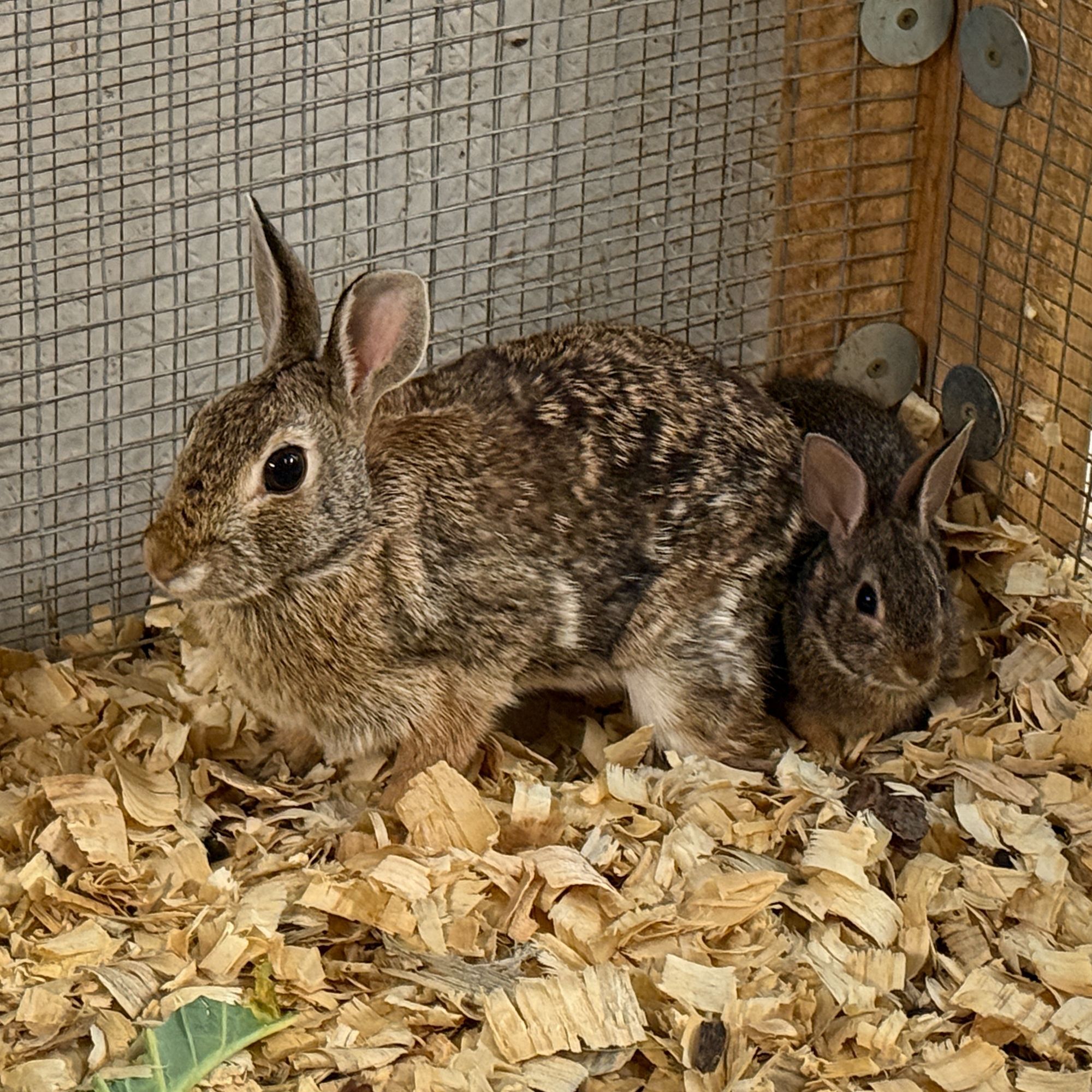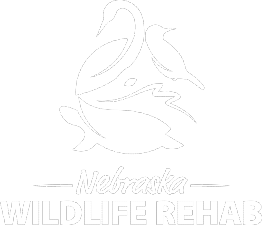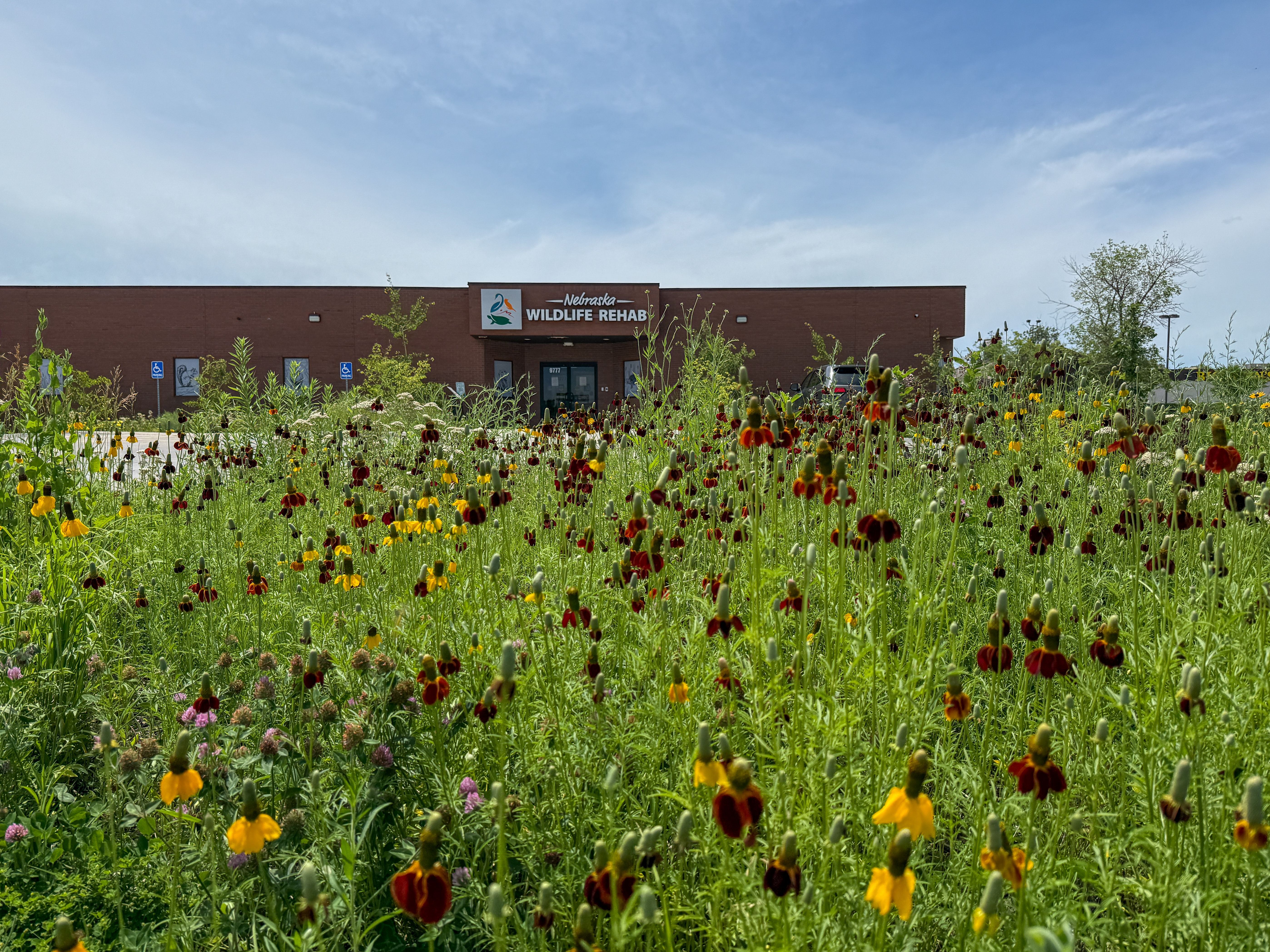When Biology Breaks the Rules
At first glance, this may look like a typical eastern cottontail rabbit pictured beside one of her young just before release—but her story is anything but ordinary. She became the star of a rare and compelling medical case at the Baldwin Wildlife Center, after being found immobile and very pregnant.

Eastern cottontails are among our most frequently treated patients, but this case stood out for several reasons. Chief among them was the presence of eclampsia, a life-threatening condition caused by acute calcium deficiency. This diagnosis is extremely rare in this species and, without immediate intervention, often fatal.
Because of advanced diagnostic capabilities, including on-site blood analysis and x-ray, our team was able to rapidly determine critically low calcium levels that were impairing her ability to contract muscles—especially those required for labor. Following IV calcium supplementation, she began to recover, and within 24 hours, she successfully gave birth to very large, overdue babies that appeared to be nearly two days old at delivery, suggesting labor had been stalled.
Even more extraordinary, this mother didn’t just survive - she went on to do something almost unheard of in wildlife rehabilitation: she cared for her babies in captivity. Wild eastern cottontails are known for being high-stress animals that often don’t exhibit maternal behaviors in captivity, especially following the trauma of injury, handling, and medical intervention. But against all odds, this resilient rabbit allowed her young to nurse and tended to them just as she would have in her natural habitat.
What happened next challenged long-standing assumptions about cottontail biology. It has long been believed that eastern cottontails nurse their young for only 2–3 weeks, when kits become fully independent. But under close observation in our care, this mother continued to nurse for over a month, suggesting that under the right conditions, cottontail maternal behavior may be more flexible than previously thought.
Her recovery, successful birth, and rare display of extended maternal care is much more than a feel-good story – it offers new insights into this species' biology, showcasing how advanced medical care and rehabilitation can intersect with unexpected discoveries in wildlife science. Even the most common creatures can still surprise us, carrying mysteries that reveal themselves only through close observation, care, and relentless curiosity about the lives of our wild neighbors.

